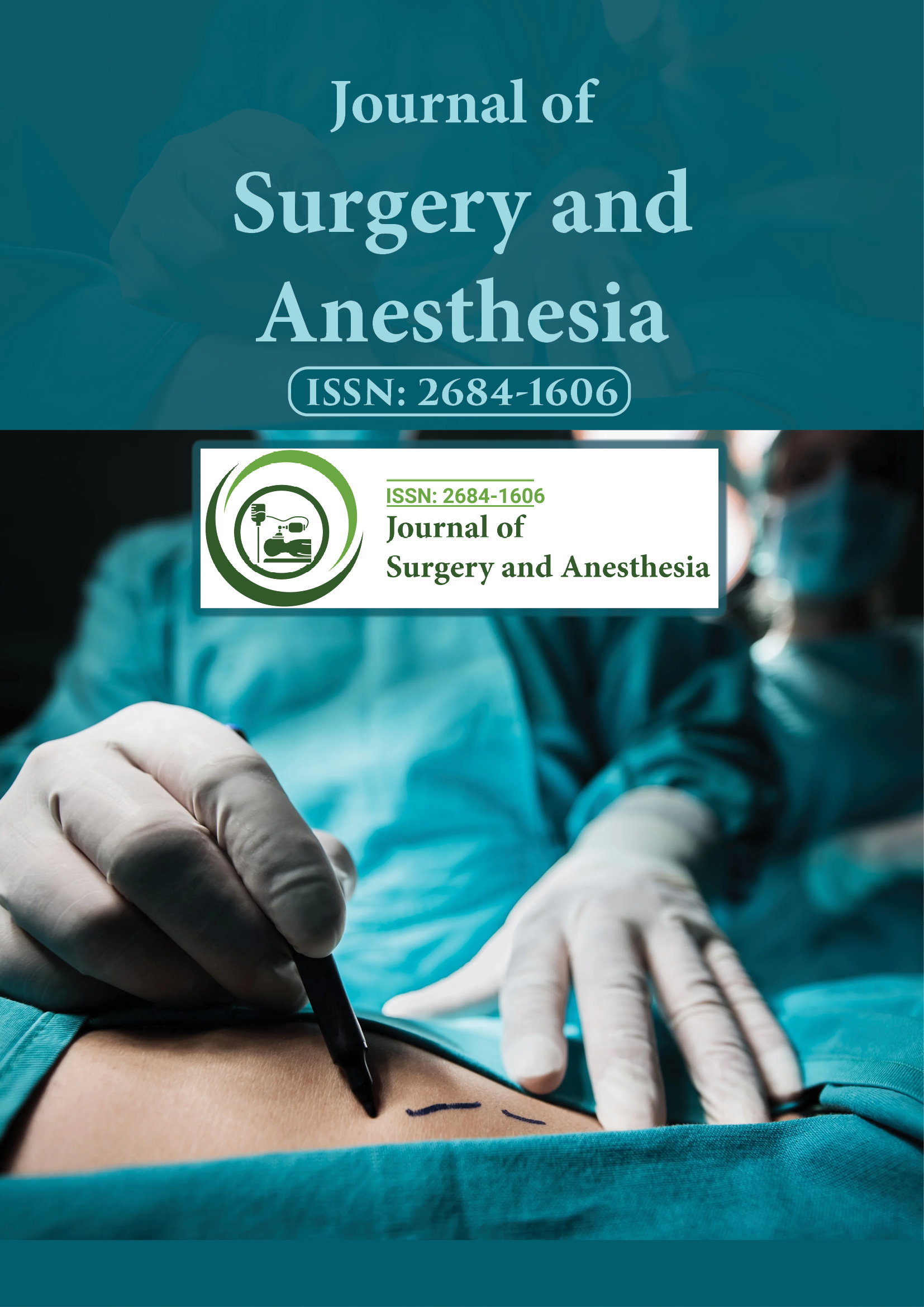Indexed In
- Google Scholar
Useful Links
Share This Page
Journal Flyer

Open Access Journals
- Agri and Aquaculture
- Biochemistry
- Bioinformatics & Systems Biology
- Business & Management
- Chemistry
- Clinical Sciences
- Engineering
- Food & Nutrition
- General Science
- Genetics & Molecular Biology
- Immunology & Microbiology
- Medical Sciences
- Neuroscience & Psychology
- Nursing & Health Care
- Pharmaceutical Sciences
Perspective - (2025) Volume 9, Issue 1
Improving Surgical Outcomes with the Role of ERAS Anesthesia and Personalized Care
Marcos Nolasco*Received: 01-Mar-2025, Manuscript No. JSA-25-29047; Editor assigned: 03-Mar-2025, Pre QC No. JSA-25-29047 (PQ); Reviewed: 17-Mar-2025, QC No. JSA-25-29047; Revised: 24-Mar-2025, Manuscript No. JSA-25-29047 (R); Published: 31-Mar-2025, DOI: 10.35248/2684-1606.25.9.279
Description
The evaluation of surgical outcomes has emerged as a foundation in improving the quality, safety, and effectiveness of modern healthcare systems. While the technical success of surgery is important, it is the comprehensive assessment of postoperative outcomes both short and long-term that ultimately defines the value of surgical care. With increasing global emphasis on value-based care and patient-centered metrics, understanding the multifactorial dimensions that influence surgical outcomes is vital for clinicians, hospitals, and health policymakers.
Surgical outcomes encompass a wide array of parameters, including morbidity, mortality, complication rates, readmissions, operative time and length of hospital stay, pain control, recovery time, and patient satisfaction. Traditionally, mortality and complication rates have served as primary endpoints. However, these metrics alone are insufficient to capture the nuanced impact of surgical interventions, especially for elective or minimally invasive procedures where survival is not the only concern.
Recent advancements have emphasized Enhanced Recovery after Surgery (ERAS) protocols, which integrate evidence-based perioperative practices to reduce complications and accelerate recovery. Studies have shown that ERAS significantly improves surgical outcomes across multiple specialties, including colorectal, orthopedic, gynecological, and hepatobiliary surgery. Key components such as prehabilitation, multimodal analgesia, avoidance of nasogastric tubes, and early mobilization have become standard recommendations.
Anesthesia techniques also play a pivotal role in determining postoperative outcomes. The shift from general anesthesia toward regional and neuraxial techniques in certain surgical contexts has contributed to lower rates of postoperative delirium, reduced opioid consumption, and earlier discharge. Anesthesia-related advancements in patient monitoring, such as depth-of-anesthesia indices and goal-directed fluid therapy, have been shown to reduce intraoperative complications and improve hemodynamic stability, thereby optimizing recovery.
Patient-specific factors significantly affect surgical outcomes. Age, comorbidities, nutritional status, psychological well-being, and social support systems all contribute to postoperative recovery. Preoperative risk stratification using tools like the American Society of Anesthesiologists (ASA) classification or the Surgical Apgar Score helps in predicting risks and tailoring perioperative management. Moreover, the inclusion of Patient-Reported Outcome Measures (PROMs) has become increasingly important, enabling clinicians to gauge functional recovery and quality of life beyond traditional metrics.
Minimally Invasive Surgery (MIS) has transformed the surgical landscape, offering reduced blood loss, shorter hospitalization, faster recovery, and improved cosmetic outcomes. Robotic-assisted techniques have further refined the precision and reproducibility of complex procedures, particularly in urology, cardiothoracic surgery, and colorectal oncology. Nevertheless, the learning curve, cost, and availability of MIS continue to influence its widespread adoption, which in turn affects outcome comparisons between surgical approaches.
Healthcare systems must also consider institutional and systemic factors. Surgical volume, surgeon experience, adherence to evidence-based protocols, multidisciplinary teamwork, and postoperative care quality all contribute to variations in outcomes. High-volume centers often demonstrate superior results in complex surgeries, reflecting the importance of experience and resource availability.
With the growing availability of big data, machine learning algorithms and artificial intelligence are being deployed to predict surgical risks, personalize patient care, and refine outcome measurements. These technologies promise not only predictive accuracy but also real-time decision support, potentially redefining perioperative care pathways.
In conclusion, the measurement and enhancement of surgical outcomes require a holistic, patient-Centered approach that integrates clinical expertise, technological innovation, and system-level coordination. Future research should focus on standardizing outcome definitions, improving data interoperability, and ensuring that patient voices are integral to surgical success. By embracing a multidimensional view of outcomes, surgeons and anesthesiologists can ensure that surgical care continues to evolve in safety, precision, and compassion.
Citation: Nolasco M (2025). Improving Surgical Outcomes with the Role of ERAS Anesthesia and Personalized Care. J Surg Anesth. 9:279.
Copyright: © 2025 Nolasco M, et al. This is an open-access article distributed under the terms of the Creative Commons Attribution License, which permits unrestricted use, distribution, and reproduction in any medium, provided the original author and source are credited.
